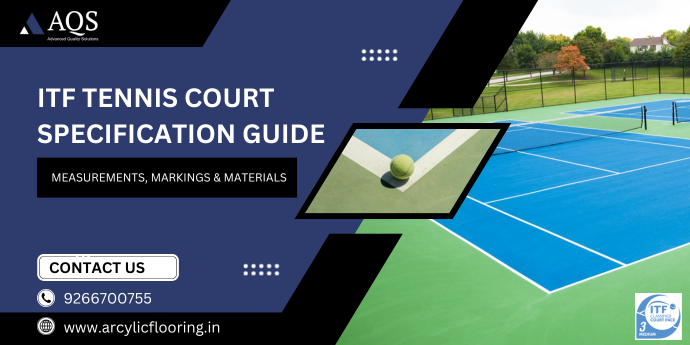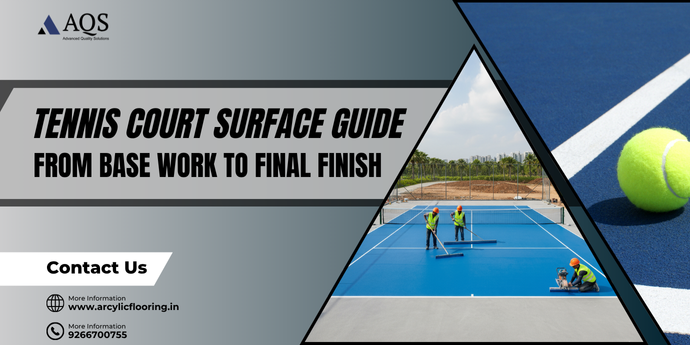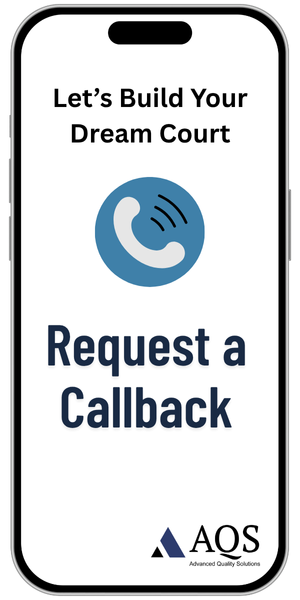Behind every great game, powerful serve and precise bounce lies one silent hero: the flooring. From club tournaments to professional arenas, today’s players demand more than just a painted concrete base; they expect a surface that responds, absorbs and endures. This is where acrylic tennis court flooring has changed the game.
Modern acrylic systems aren’t just coatings; they’re performance layers. Each layer from the primer to the cushion to the topcoat plays a scientific role in how the tennis court feels underfoot. The right system gives movement, stops injuries and gives players that perfect grip-to-glide balance. But the real difference isn’t just about the number of layers it’s about the manufacturer behind them. A trusted tennis court surface manufacturer knows that great flooring is a mix of advanced materials, right ratios and precise application.
So if you’re looking to buy sports flooring for a new project or to resurface an existing tennis court, you need to look beyond the colour charts and price lists. The goal isn’t just to build a court but to build consistency, durability and professional level performance into every layer.
This guide is your complete roadmap from understanding why acrylic systems are better to material composition, installation techniques, pricing factors and manufacturer insights. Whether you’re a sports facility owner, academy head or a developer building premium tennis courts, this is the only guide you’ll need to make a decision that lasts on the scoreboard and beyond.
Acrylic Flooring Systems
A tennis court is more than just a flat surface; it’s an engineered surface that directly impacts player performance and the life of the facility. Acrylic sports flooring is the choice of modern courts worldwide due to its durability, consistent bounce and low maintenance. Understanding its parts, types and standards is key if you’re looking to buy sports flooring for tennis courts.
What Is Acrylic Sports Flooring?
Acrylic sports flooring is a multi layered surface designed to give you the perfect combination of traction, shock absorption and weather resistance. Its main components are:
- Acrylic Resurfacer: The base and binding layer that gives the tennis court surface its strength and flexibility.
- Silica Sand: Adds on texture and slip resistance so tennis courts have consistent grip in all conditions.
- Color Coat: Allows to customize your tennis court colors without compromising durability or performance.
- Rubber Cushioning: Absorbs impact, reduces stress on joints and enhances player comfort.
Unlike cement or asphalt tennis courts that crack or wear unevenly over time, acrylic flooring is designed to maintain a consistent bounce and smooth surface for years. Compared to synthetic turf, acrylic tennis courts require less maintenance, are weather resistant and give you better ball bounce for recreational and professional play.
Layer System in Acrylic Flooring
Acrylic court systems vary in number of layers and whether they have cushioning. Choose the right system for usage, budget and player requirements:
- 5-Layer Systems: Entry-level commercial option. Basic durability and grip. Schools or low-traffic courts.
- 6-Layer Systems: Adds an extra topcoat for colour coat and surface consistency. Moderate-traffic club courts.
- 8-Layer Systems: Multiple filler and top layers. Improved shock absorption and longevity. Professional training facilities.
- 9-Layer Systems: Premium option. Maximum cushioning, UV resistance and performance consistency. Tournament-grade or high-usage courts.
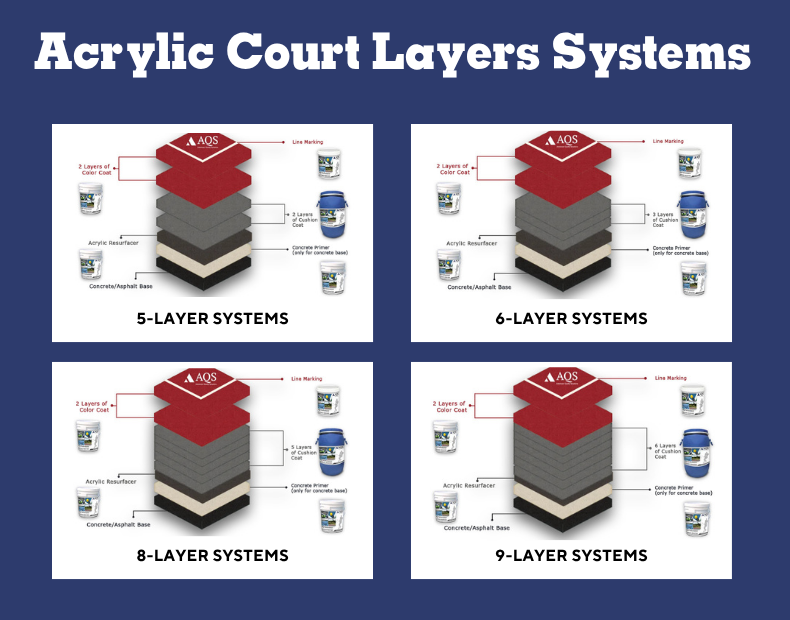
Cushioned vs Non-Cushioned Systems:
- Cushioned Systems: It is rubberized layers for joint protection for High-traffic or frequent play.
- Non-Cushioned Systems: More cost-effective and durable for outdoor courts use where impact absorption is less risky.
ITF Classification & Standards
For commercial buyers, choosing an ITF approved acrylic tennis court surface means the court meets international performance standards. The International Tennis Federation (ITF) classifies surfaces by pace rating:
- Slow: More control. Training academies and recreational courts.
- Medium: Balances speed and control. Most club courts.
- Fast: Quicker ball speed. Tournament-level and professional facilities.
Buying an ITF approved system means consistent ball bounce, better player experience and credibility for the facility. For commercial projects, it’s not just about looks it’s about long term performance, compliance and attracting players or tournaments.
Why Acrylic Flooring Is Best for Tennis Courts?
When it comes to building a high performance tennis court, the surface is not just a foundation it’s the foundation of the whole playing experience. Acrylic flooring for tennis courts has become the go to solution for both commercial and professional facilities, offering a unique combination of performance, durability and sustainability. Here’s why investing in a good acrylic system makes all the difference.
Performance Benefits
Acrylic flooring is designed to give consistent playability and comfort. Unlike basic concrete or asphalt, an acrylic surface gives uniform ball bounce across the whole tennis court, no nasty surprises that can affect gameplay. This consistency is key for training and competitive matches, giving players confidence in their shots.
This is designed to give consistent playability and comfort. Unlike basic concrete or asphalt, an acrylic surface is the best option. Shock absorption is another big advantage, especially in cushioned systems. These tennis court flooring reduce the impact on knees, ankles and lower back. So players can train longer without exhaustion or injury. Overall acrylic tennis courts give player comfort which directly improves performance and safety.
Durability and Weather Resistance
One of the best things about acrylic flooring is it can withstand all weather conditions. Whether it’s the heat of the sun, heavy rain or cold winters. Acrylic tennis courts remain structurally sound and performant. Top quality coatings have UV resistant colors to stop fading and discoloration even under the heating sun.
The anti-slip texture remains effective in dry and wet conditions, making these tennis courts safer for heavy use. Plus acrylic layers are designed to resist cracking, peeling and other surface damages common to cement or clay courts.
Maintenance & Lifespan
Compared to other surfaces, acrylic tennis courts are low maintenance. Just water and mild detergent for regular cleaning and the non porous layers stop dirt, mold or algae buildup. Unlike clay tennis courts which need daily maintenance or synthetic turf which may need regular infill replacement, acrylic surfaces save time and operational costs.When resurfacing is needed, the process is easy. A new layer of acrylic resurfacer can be applied every few years to restore the tennis court’s original colour, traction and performance without the need for a full rebuild. This combination of durability and low maintenance makes acrylic tennis courts a practical option for high traffic commercial facilities.
Environmental Benefits
Sustainability is a growing concern for facility developers and acrylic tennis courts through eco friendly manufacturing processes. Many builders also focus on recyclable materials and responsible sourcing to lessen the environmental impact of new tennis court construction.
Acrylic Tennis Court Flooring Buying Guide
Choosing the right acrylic flooring tennis court is more than just about looks. The right surface can impact player performance, safety and your investment. For commercial facilities, clubs, schools or professional academies, understanding the complications of acrylic court systems is key before buying sports flooring for tennis courts.
How to Choose
Choosing the right acrylic tennis court flooring starts with your needs. Here are the key things to consider:
- Budget: While multi-layer systems are more expensive, they are more durable and save long term maintenance costs. Is short term affordability more important or long term performance?
- Court Usage: The level and frequency of play will impact the flooring choice. A high traffic club or academy tennis court will need a cushioned 8 or 9-layer system, a school or recreational court may be fine with a 5 or 6-layer system.
- Climate: Acrylic floors are weather resistant but extreme climates may need additional UV resistant coatings or anti-slip layers. Think rainfall, heat intensity and seasonal changes.
- Expected Footfall: Courts with heavy daily use require stronger cushioning and multiple top layers to make sure consistent bounce and minimize wear.
By assessing these factors choose a system that meets both functional and financial requirements and maximizes player experience.
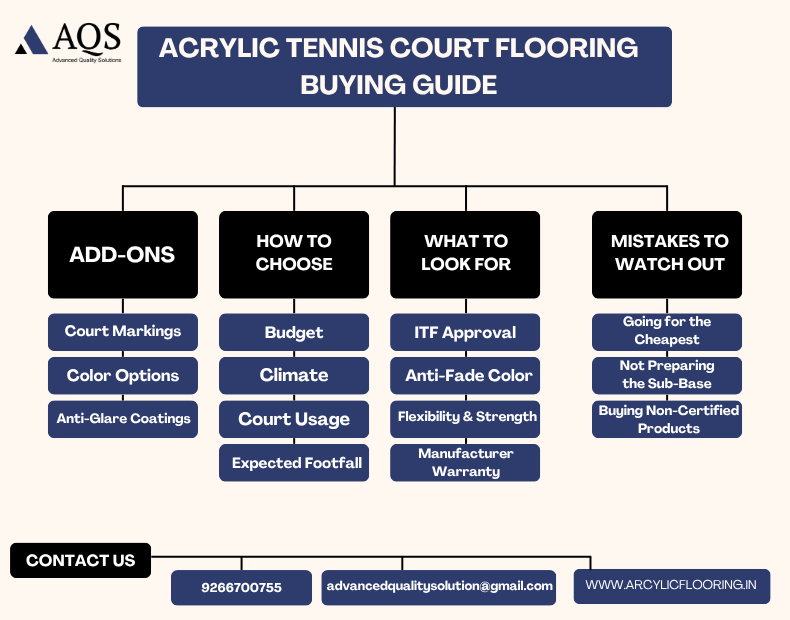
What to Look For
Not all acrylics are created equal. Here’s what to check before you buy:
- ITF Approval: ITF certified surface means the court meets international standards for ball bounce, speed and traction for academies, clubs and commercial facilities.
- Anti-Fade Color: High quality acrylic maintains its color and grip in high sun. Important for outdoor courts exposed to harsh UV.
- Flexibility & Strength: Acrylic layers should resist cracking and absorb impact well, protect players from injury.
- Manufacturer Warranty: A good warranty means the manufacturer is confident in the product.
Mistakes to Watch Out When Buying Acrylic Flooring Materials
Even experienced facility managers can make costly mistakes when buying acrylic flooring. Here are some common falls:
- Going for the Cheapest: Lower cost materials sacrifice layer consistency, color quality or cushioning and result in uneven bounce and wear.
- Not Preparing the Sub-Base: A well prepared concrete or asphalt base is important for durability. Skipping this step means cracks, water pooling and early resurfacing.
- Buying Non-Certified Products: Avoid unverified or locally mixed products. ITF approved systems may cost more but guarantee performance, safety and compliance to professional standards.
By avoiding these mistakes, commercial buyers can save time, cost and hassle in the long run.
Acrylic System Add-Ons
Acrylic flooring is very versatile and several add-ons can enhance both functionality and aesthetics:
- Court Markings: Pre-painted or custom-line options to make sure ITF dimensions and improve visibility during play.
- Anti-Glare Coatings: Reduces glare from sun or floodlights and player comfort and safety.
- Color Options: Custom colors to match your facility branding or design.
These add-ons make the tennis court better for players, more visible, safer and looking good.
Acrylic Court Construction Process: Step-by-Step
Building a tennis court is a precise process that requires planning, professional materials and skilled execution. Acrylic flooring for tennis courts is not just about the surface you see, it’s about building a multi-layered system that gives consistent bounce, durability and player safety. Whether you’re a club owner, school administrator or commercial developer looking to buy sports flooring, understanding the construction process is key to long term performance. Here’s a step by step guide.
Base Preparation
The base of any acrylic tennis court is important to its performance and longevity. Base is usually constructed using concrete or asphalt, levelled with a slight slope for proper water drainage. Proper drainage stops water seepage, cracks and damage to the acrylic layers.
Before we lay the acrylic layers the base is cleaned and checked for uneven areas or cracks. Any minor cracks or imperfections are filled with specialized fillers. A good base ensures the layers stick and the court has consistent bounce and traction.
Primer & Resurfacer Layer
The next step is to apply a primer and resurfacer layer, this is the bonding agent between the base and the acrylic layers. The primer sticks to the base, seals tiny pores and provides a smooth surface.
For best results tennis court manufacturers recommend precise mixing ratios of primer, water and filler materials. This layer also levels minor surface imperfections and adds a protective barrier that enhances the adhesion of cushion and top layers. Without a proper primer the acrylic layers may peel, crack or separate over time and compromise performance and increase maintenance costs.
Cushion or Filler Layers
Cushion layers are applied next, especially in cushioned acrylic systems. These layers often contain a rubberized acrylic mix, which provides shock absorption, reduces joint stress and player comfort.
The number of cushion or filler layers depends on the system. Each layer is moved and allowed to dry before the next application. This makes sure uniform thickness, elasticity and durability across the entire tennis court surface. Even non-cushioned systems often have filler layers to improve adhesion and surface strength.
Cost of Acrylic Flooring for Tennis Courts
Investing in an acrylic tennis court is a long term decision which combines functionality, aesthetics and player performance. Understanding cost structure is very important for schools, clubs, academies and commercial facilities before they buy sports flooring for tennis courts. While the initial cost may vary based on the system and customization, acrylic tennis courts offer excellent value over their life.
Price Range (Per Sq. Ft. / Per Court)
The cost of acrylic tennis court flooring depends on the number of layers, system type and additional features like cushioning or custom colors. For commercial grade tennis courts in India:
- 5-Layer System: ₹80–₹100 per sq. ft., ideal for recreational courts and schools.
- 6-Layer System: ₹100–₹120 per sq. ft., suitable for moderate traffic club courts.
- 8-Layer System: ₹120–₹140 per sq. ft., designed for high traffic academies or training facilities.
- 9-Layer Premium System: ₹140–₹150+ per sq. ft., used for professional tournament grade courts.
For a 60×30 ft. court, this approximate total cost of ₹14–22 lakh, depending on the system and add-ons. Prices may vary further based on location, installation complexity and manufacturer
Factors Affecting Tennis Court Cost
Several factors influence the final cost of an acrylic tennis court:
- Base Quality: The strength and smoothness of the concrete or asphalt base directly affects layer fixing and longevity. A well prepared base may add to the upfront cost but stops future repairs.
- Number of Layers: More layers, more cushioning, durability and ball bounce more material and labor cost.
- Materials Used: Premium resins, UV resistant color and high quality rubber fillers cost more but better court performance.
- Color Choices & Customization: Special colors, logos, custom design, more material and labor cost.
- Brand & Manufacturer: Reputed brands may cost more but they guarantee ITF approved quality, warranty and technical support so you can have long term satisfaction.
Knowing these factors will help you budget wisely and prioritize quality and performance over short term savings.
Commercial Project Pricing (Bulk Orders)
For large projects such as multiple tennis courts in sports academies or club complexes, manufacturers often offer bulk pricing and discounts. Additional benefits for commercial buyers may include:
- Reduced material costs for multiple courts.
- Free color or customization options.
- Technical support and supervision during installation.
- Extended warranty for large volume contracts.
Bulk orders make premium 8- or 9-layer systems more affordable per court so commercial facilities can have top-tier surfaces without compromising on quality.
Long Term ROI
High quality acrylic flooring may cost more upfront but the long term return on investment is massive:
- Less Maintenance: Premium layers don’t crack, peel or fade so minimal maintenance compared to clay or synthetic tennis courts.
- Longer Life: Properly installed acrylic systems last 5-7 years or more so no need for full resurfacing.
- Better Player Experience: Courts with consistent ball bounce and shock absorption attract players, tournaments and memberships so more profit for commercial facilities.
- Compliance & Credibility: ITF approved surfaces boost your facility’s reputation so it becomes a preferred destination for professional training and competitions.
By focusing on durability, performance and long term savings commercial buyers can make an informed decision that maximizes tennis court quality and financial return. Investing in acrylic tennis court flooring is not just about having a playable tennis court surface, it’s about having a facility that performs, attracts players and remains valuable for years. Proper planning, understanding the cost factors and choosing the right manufacturer are the keys to a successful high return project.
Top Features to Compare Between Manufacturers
Not all acrylic court surfaces are created equal and neither are the manufacturers behind them. When you buy acrylic flooring for tennis courts, you need to look beyond the price per square foot. The real difference is in the technical quality, warranty and long term support from the manufacturer. Whether you’re building one tennis court or a whole sports complex, here are the top features to compare before you decide.
1. Warranty and Certification
A professional tennis court surface manufacturer will always back their product with transparent warranties and recognized certifications. Look for ITF approved systems that have been tested for pace, friction and rebound. These certifications make sure your court meets global standards and performs consistently.
Warranty periods vary by brand, good manufacturers will give you a warranty of 3 to 7 years depending on the system. A longer warranty reflects the brand’s confidence in their materials, UV stability and fixing. Always check if the warranty covers fading, peeling and surface cracking, not just installation.
2. Layer Thickness Consistency
The feel and durability of a tennis court depends heavily on the uniform thickness of each layer. Some low cost suppliers will skip or thin out layers to reduce material usage which results in uneven bounce and faster wear.
Good manufacturers have quality control over layer application, making sure each coat from primer to top finish is applied with precision. This guarantees uniform shock absorption, surface grip and overall player comfort across the court.
3. UV Resistance & Color Retention
Outdoor tennis courts are exposed to sunlight 24/7 which can cause fading and surface breakdown over time. Good manufacturers use UV resistant colors and resins to maintain color brightness and elasticity even in extreme conditions.
When comparing brands ask for performance reports or test data that shows color retention and UV stability. Premium acrylic systems will maintain color tones and performance for years without needing to be recoated, a big factor for commercial projects.
4. After Sales Support and Technical Guidance
A manufacturer’s job doesn’t end after delivery. Good partners will provide on site technical supervision, mixing ratio guidance and troubleshooting during installation. This makes sure your contractor applies the material correctly to get the desired performance.
Good after sales support also includes help with resurfacing schedules, product recommendations and maintenance plans. This ongoing support will extend the life of your court and ensure playability.
5. Global Supply and Meeting Deadlines
For big academies, builders or international projects timely delivery and consistent supply is key. Good manufacturers have strong logistics and export experience and can supply materials worldwide without compromising on quality or deadlines.
When comparing suppliers, always check their production capacity and delivery history. A company that meets international deadlines consistently is professional and reliable, a must for commercial buyers with tight schedules.
Why Choose a Manufacturer Over Local Vendors?
When it comes to building a professional-quality tennis court, the difference between a certified manufacturer and a local vendor is more than just price; it’s about consistency, safety and long-term value. While local suppliers may offer cheaper materials, professional manufacturers like Pacecourt, Top Flooring, Advanced Quality Solutions (AQS), and SLT Sports deliver tested formulations that meet ITF standards and perform year after year.
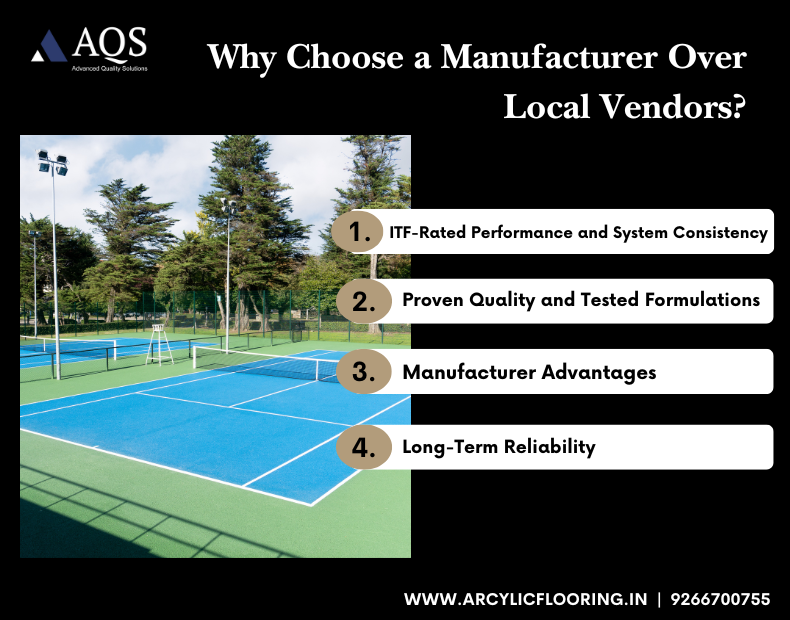
1. Proven Quality and Tested Formulations
Manufacturers don’t guess they research, test and science. Brands like Pacecourt, Top Flooring, Advanced Quality Solutions (AQS) and SLT Sports have developed specialized acrylic systems engineered for consistent performance across all climates. These systems are made with balanced ratios of acrylic resins, silica and rubber cushioning compounds to make sure surface elasticity and player comfort.
Local vendors use low-grade paint or untested mixes, uneven texture, poor fixing and rapid wear. Without quality control these courts fade, crack and lose bounce uniformity all of which increase maintenance costs and lower playability.
2. ITF-Rated Performance and System Consistency
Leading manufacturers provide ITF-rated acrylic systems that have been tested for pace, friction and surface uniformity. Whether it’s Pacecourt’s 8-layer cushioned system, Top Flooring’s multi-layer performance surface or AQS and SLT Sports commercial-grade coatings, these brands maintain consistent formulation across batches, something local vendors can’t.
Buying from a certified manufacturer means every layer from primer to topcoat performs as designed, giving you ideal bounce, speed and shock absorption demanded by players and tournament organizers.
3. Manufacturer Advantages
Buying direct from a manufacturer comes with several advantages that go beyond material quality:
- Bulk Pricing: Manufacturers offer competitive pricing for academies, builders and large projects especially when ordering multiple tennis courts or surfaces.
- Technical Support: Brands like Pacecourt, Top Flooring and SLT Sports provide on-site guidance, application training and supervision to make sure perfect layer application and curing.
- Customization & Branding: Need your academy colors, logo integration or custom finishes? AQS and Top Flooring offer design flexibility local vendors can’t.These services mean your court looks premium and plays like one every layer backed by technical standards.
4. Long-Term Reliability
A professional manufacturer doesn’t disappear after the sale. They provide after-sales support, resurfacing recommendations and maintenance guidance to help you keep your tennis court for years. With tested formulations and dedicated customer support your investment is protected.
In short, local vendors may offer short term savings choosing a certified manufacturer like Pacecourt, Top Flooring, Advanced Quality Solutions (AQS), and SLT Sports means international quality, ITF certification and long term performance. For anyone building a professional or commercial tennis facility buying direct from the manufacturer isn’t just the better choice it’s the only choice that gives you lasting value.
Choosing the Right Tennis Court Manufacturer: Key Points
Choosing the right tennis court surface manufacturer is no joke. The difference between a court that performs flawlessly for 7 years and one that fades or cracks within a few seasons is often just one thing the manufacturer you choose. Brands like Pacecourt, Top Flooring, Advanced Quality Solutions (AQS) and SLT Sports have earned trust through tested materials, ITF approvals and strong technical support systems. To make sure your investment delivers what you expect, here are five key evaluation points to consider before you buy.
Check Certifications & ITF Approvals
A professional tennis court demands ITF approved materials not just paint labeled “sports flooring”. International Tennis Federation (ITF) approval means the surface has passed pace rating, friction and rebound consistency tests.
Manufacturers like Pacecourt and Top Flooring have systems that match ITF performance categories like slow, medium and fast pace ratings. These approvals make sure your tennis court performs to global standards and can host official matches if needed. Always ask for the product’s test report or certification proof before you finalise your order.
Ask for Product Samples
A good manufacturer is always confident about their product. Before you place a large order, ask for material samples or a demo patch application to test surface grip, bounce uniformity and finish texture.
Samples also help you check colour consistency and coating thickness. Reliable brands like Advanced Quality Solutions (AQS) and SLT Sports encourage sample testing because they know seeing and feeling the difference in performance helps you make an informed decision.
Check Past Project References
The best point of a manufacturer’s responsibility is their track record. Ask for case studies, client lists or photos of completed projects. Experienced brands like Pacecourt and Top Flooring have built courts for academies, schools and clubs in India and abroad.
Checking past projects helps you understand how their materials perform in real world conditions, weather exposure, player traffic and maintenance results over time. A consistent project portfolio is a strong sign of product reliability and professional service.
Understand Layer System Compatibility
Each manufacturer has their layer system designed differently and not all are compatible with every base or climate. For example a 9 layer cushioned system designed for high end clubs may not be cost effective for a school court.
Talk to the manufacturer about your project’s base (asphalt or concrete), expected footfall and location. Experts from Pacecourt, AQS, Top Flooring or SLT Sports can advise you on the most suitable system for your requirement performance, comfort and budget. This consultation makes sure the system you choose works in harmony with your court’s base and usage patterns.
Post-Sales & Maintenance Support
One of the biggest advantages of working with a certified manufacturer is long term technical and maintenance support. Reliable companies don’t disappear after installation; they guide you on resurfacing intervals, cleaning routines and minor repairs.
Manufacturers like Top Flooring and Pacecourt often provide on site supervision, maintenance training and warranty backed service to ensure your court remains in optimal condition for years to come.
When you buy acrylic flooring for tennis courts, don’t just compare prices compare credibility. The right manufacturer will be your long term partner, making sure every layer is engineered for performance, safety and endurance. By verifying certifications, checking references, testing samples and evaluating support systems you can choose a partner who builds more than just courts they build lasting value.
Maintenance & Resurfacing Tips
Building a professional tennis court with acrylic flooring is a long term investment but maintaining it properly is what ensures that investment keeps performing year after year. Even the best courts built with premium systems from manufacturers like Pacecourt, Top Flooring, Advanced Quality Solutions (AQS) or SLT Sports require regular care to preserve their bounce, traction and appearance. Fortunately acrylic courts are the lowest maintenance sports surfaces, needing only periodic cleaning and resurfacing to stay tournament ready.
1. Cleaning Methods
Regular cleaning is the simplest and most effective way to extend your tennis court’s life. Dirt, dust and organic debris like leaves or algae can gradually wear down the surface texture and reduce traction.
- Weekly Cleaning: Use a soft bristle broom or blower to remove leaves, sand and other debris.
- Monthly Wash: Clean with mild detergent and water using a low pressure hose or soft scrubber. Don’t use harsh chemicals as they may damage the acrylic coating.
- Immediate Spill Cleaning: If there are stains from drinks, oils or bird droppings clean them immediately to stop surface discoloration.
Don’t use high pressure jets or metal scrapers; they can erode the textured layer and affect playability.
2. Re-Coating & Resurfacing Schedule
Even the toughest acrylic courts need resurfacing every few years to restore colour, grip and uniformity.
- Re-Coating: Light re-coating every 3–4 years keeps traction and colour bright.
- Full Resurfacing: Full resurfacing including minor crack repair and new colour layers is recommended every 6–8 years depending on usage and climate.
Pacecourt and AQS manufacturers provide resurfacing materials that bond to existing layers without needing to remove the whole lot. Regular re-coating also stops UV damage and makes consistent ball bounce.
3. Drainage & Moisture Care
Proper water drainage is key to long term court health. Make sure surrounding drains and slope systems are clear especially after heavy rain. Standing water can seep into base layers and weaken adhesion and cause surface cracks. Periodic inspection of the slope gradient and edges will maintain proper runoff.
4. Seasonal Inspection Checklist for Commercial Courts
For academies, clubs and commercial facilities seasonal inspections are a must. A quick maintenance audit should include:
- Checking for cracks or peeling near baselines and edges.
- Making sure colour coating is even and anti-slip texture is intact.* Nets, posts and lighting structures haven’t caused surface stress.
- Water drains after rain.
Schedule professional inspections twice a year before summer and after monsoon to catch small issues before they become big repairs.
Regular cleaning, timely resurfacing and drainage maintenance will keep your acrylic tennis court tournament ready. With technical support from certified manufacturers like Pacecourt, Top Flooring, AQS and SLT Sports your tennis court will perform like a pro.
Conclusion
When it comes to tennis court construction, every layer matters and so does the company behind it. Acrylic flooring is the gold standard for modern tennis courts, offering durability, comfort and professional level performance that lasts for years. Unlike cement or clay courts, acrylic systems are scientifically designed to give consistent bounce, superior grip and long term resilience in any climate.
Whether it’s a school, sports academy or private club, the goal is not just to build a court, it’s to build a sporting asset that performs season after season. That’s why partnering with reputed companies like Pacecourt, Top Flooring, Advanced Quality Solutions (AQS) and SLT Sports ensures highest standards of quality, ITF certification and technical precision. Their products are not just coatings; they are performance systems designed for Indian climate and play conditions.
In the long run, a tennis court built with premium acrylic systems doesn’t just save maintenance it raises the entire sporting experience. So before you lay the first coat, choose a name that stands for excellence. Buy acrylic flooring for tennis courts from India’s top companies and make every serve, rally and match point a statement of performance.
Frequently Asked Questions
Acrylic sports flooring is a multi-layer synthetic surface made using resin-based coatings that provide grip, flexibility, and weather resistance. It’s widely used for tennis, basketball, and pickleball courts.
Professional-grade courts generally have 7 to 9 layers, including base coats, cushion layers, and color coats. Fewer layers (like 5-layer systems) are suitable for schools or recreational areas but may not deliver the same shock absorption or ball response.
The cost usually ranges between ₹80 to ₹150 per sq. ft., depending on the brand (like Pacecourt or Top Flooring), the number of layers used, and the base condition. A full-sized court can cost between ₹6 lakh to ₹12 lakh based on specifications.
Both can work well if built correctly. However, asphalt provides better flexibility and drainage, while concrete is more durable.
A standard-sized court typically takes 7 to 14 days to complete, depending on weather conditions, curing time, and the number of layers applied.
On average, every 4 to 6 years is recommended. Regular cleaning, minor crack repair, and reapplication of top color coats help maintain court performance and prevent premature wear.
Acrylic flooring offers better ball bounce, traction, and weather resistance, making it ideal for outdoor courts. Turf is softer and preferred for indoor or multi-use spaces, while PU flooring is used for indoor sports like badminton or basketball.

